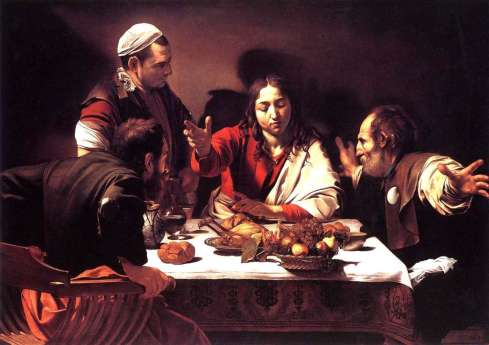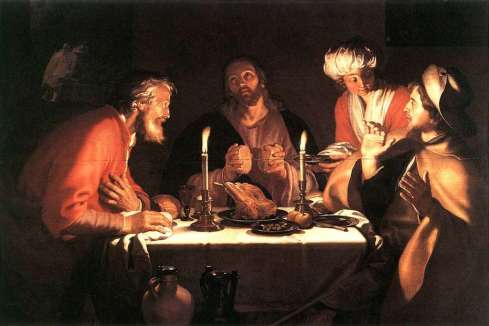
Matthew 22: 23-33
Parallels Mark 12: 18-27, Luke 20: 27-40
23 The same day some Sadducees came to him, saying there is no resurrection;and they asked him a question, saying, 24 “Teacher, Moses said, ‘If a man dies childless, his brother shall marry the widow, and raise up children for his brother.’ 25 Now there were seven brothers among us; the first married, and died childless, leaving the widow to his brother. 26 The second did the same, so also the third, down to the seventh. 27 Last of all, the woman herself died. 28 In the resurrection, then, whose wife of the seven will she be? For all of them had married her.”
29 Jesus answered them, “You are wrong, because you know neither the scriptures nor the power of God. 30 For in the resurrection they neither marry nor are given in marriage, but are like angelsin heaven. 31 And as for the resurrection of the dead, have you not read what was said to you by God, 32 ‘I am the God of Abraham, the God of Isaac, and the God of Jacob’? He is God not of the dead, but of the living.” 33 And when the crowd heard it, they were astounded at his teaching.
The second conflict story in this pattern of three shifts opponents to the Sadducees. This is the second time in Matthew the Sadducees are mentioned as challenging Jesus, previously they were mentioned with the Pharisees in Matthew 16:1-4, but now in Jerusalem they act on their own. Their question uses the practice of Levirate marriage and a story of one bride for seven brothers to mock the idea that both Jesus and the Pharisees apparently preached of the resurrection. Even though this is the only time the Sadducees are explicitly mentioned in the final week in Jerusalem, the chief priests and elders were probably composed mainly of Sadducees, and the silencing of the Sadducees before the crowds contributes to their desire to end the words of Jesus.
Just as the Pharisees and the Herodians can work together for mutually beneficial purposes, the Sadducees have maintained their power in the temple through their relationship with Rome. There is an old Christian saying that Sadducees did not believe in the resurrection, so they were sad-you-see, and while this is a catchy play on words it misses the point of who the Sadducees are. The Sadducees, like much of the Hebrew Scriptures, do not have a concept of the resurrection and their belief that God’s blessings are a part of their experience in the world is probably confirmed in their minds by the more affluent priestly positions they occupied. Their faith centers on the first five books of both the Hebrew and Christian scriptures, and particularly their actions as the cultic leaders for the temple.
The story that the Sadducees use focuses on the practice of Levirate marriage (the term comes from the Latin levir meaning husband’s brother, not Leviticus) which is outlined in Deuteronomy 25:5-10
When brothers reside together, and one of them dies and has no son, the wife of the deceased shall not be married outside the family to a stranger. Her husband’s brother shall go in to her, taking her in marriage, and performing the duty of a husband’s brother to her, and the firstborn whom she bears shall succeed to the name of the deceased brother, so that his name may not be blotted out in Israel. Deuteronomy 25: 5-6
This practice is active in both the stories of Tamar (Genesis 38, Matthew 1:3) and Ruth (Ruth 4, Matthew 1:5) and was to ensure security for the widow by providing her both with a household and children (who will take care of her in old age), The story of seven brothers and one bride takes the practice to a ridiculous end, which is intentional, as the Sadducees attack the belief in a resurrection which they found contrary to their reading of scripture.
Jesus claims they have been led astray (Greek planao) in both their knowledge of scripture and their understanding of God’s power. Jesus answers first from God’s power to transform humanity in the resurrection where the values of securing one’s future through familial ties and reproduction are no longer important. In challenging the Sadducees’ reading of Moses, Jesus returns to God’s initial call of Moses where God refers to Godself as: “I am the God of your father, the God of Abraham, the God of Isaac, and the God of Jacob.” (Exodus 3: 6) Even though the patriarchs Abraham, Isaac, and Jacob died millennia earlier, Jesus refers to this ancient self-titling of God to point to both an ongoing relationship between God and these patriarchs and that the promises God made to them have not been broken by death. As Richard B. Hays, following J. Gerald Janzen, can state:
ust as God delivered and saved the patriarchs, so he will do for his people in their plight in Egypt. Furthermore, if God acted to deliver his people from the “death” of slavery in Egypt, surely he will do so again in the future—not precisely in the same way, but in ways that are recognizably analogous. Consequently, Jesus’ use of Exodus 3:6 in support of the resurrection—that claim that God will finally save his beloved people from death—is nothing other than a metaphorical extension of the Exodus theophany claim. (Hays 2020, 59)
Jesus’ claim and repurposing of the title God claims as the God of Moses’ father, Abraham, Isaac, and Jacob places the resurrection of the dead alongside God’s work to fulfill God’s promises to God’s people. The language of raising up seed (NRSV childless, the Greek is sperma where we get the English sperm) which is used frequently in the Hebrew scriptures in the stories of Abraham, Isaac and Jacob. The failure of the seven brothers to ‘raise up seed’ for the first one corresponds to the misunderstanding of the scriptures and the power of God that the Sadducees have in their inability to believe God will raise the dead. In a manner, Jesus points to a sterility in their claims which matches the sterility in their story. Only a God who can raise up children for ones as good as dead and who can raise the dead can open their eyes where they have been led astray. In Matthew, Jesus comes out the victor in the eyes of the crowd and the Sadducees are silenced. Yet, the conflict between Jesus and those in religious authority will continue until his death.

















